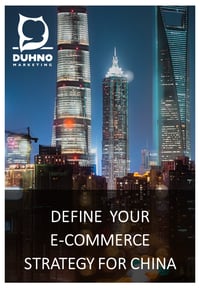China has been regarded as a massive market that almost guarantees sustainable growth and profitability. In the past, the country has offered huge opportunities for profit. It may seem like a no-brainer to launch your product here – after all, we are talking about a 1.4 billion market! Surely one of them will buy your product, right? Or maybe your brand is well known internationally, so Chinese consumers can’t wait to get it.
These are some common assumptions foreign brands have about the Chinese market. While they're not necessarily wrong, these expectations can be extremely costly and even damaging for a brand.
 Reference: pixabay.com
Reference: pixabay.com
First of all, global appeal doesn't guarantee the brand will be well received in China. Don't assume that Chinese consumers will automatically want what you're selling just because you have a well-known brand name or have been successful elsewhere. There are many high-profile cases in which western brands have fallen short in their pursuit of the Chinese consumer. Multinational lifestyle retail Urban Outfitters has failed here.Forever 21 didn’t make it in China because they neglected local preferences across many items by making them too big or too revealing for the Chinese consumer.
The Chinese market is a world of its own. While it's true that the population is vast, you can't expect to simply throw your product at them and get any results. Your brand must be able to meet specific requirements and expectations for it to succeed here.
China is an incredibly diverse market with an equally diverse set of consumers. It has one of the world's most complex consumer landscapes. Many foreign brands make the mistake to treat the country as if it were homogenous and only target the consumers from tier 1 cities. In the past few years, consumption among lower-tier cities has risen, outpacing many higher-tiered cities.
Chinese consumers are also becoming more sophisticated and pickier. They have a wide array of choices that includes domestic and international brands and are increasingly considering various criteria when making a purchase. They have higher expectations and a passion for novelty, individuality and authenticity. British apparel company New Look failed in China because it failed to offer distinct products to Chinese consumers, who prefer niche, unique and exclusive pieces.
It's no secret that understanding your audience, digging deeper than accepted stereotypes and generalizations, is a big contributor to successful advertising and marketing, and it's no different in China. Building a successful strategy depends on figuring out the target audience. Even with a well-known product or brand, it's still crucial to clearly understand your target audience in China.
But how?
Personas are your road map to getting to know your customers. We believe the best way to understand the people for whom you’re building products/services is through personas.
 Reference: shutterstock.com
Reference: shutterstock.com
A persona is a detailed description of who your ideal customer is. The purpose of personas is to create reliable and realistic representations of your key audience segments. By defining personas, you can get inside the head of the person you are targeting, giving you insight into where they come from, what motivates them, and what frustrates them. By developing a persona, you can create branding content and products that address their specific concerns and needs. Instead of using a one-size-fits-all marketing approach, you can also use personas to customize your marketing strategy.
 Reference: unsplash.com
Reference: unsplash.com
At Duhno, we run persona workshops to help you define a precise archetype, including demographics, psychographics and behavioral traits from a vague, undefined mass audience. So you can zero in on who you should focus on to succeed and get an improved ROI.
The minute a brand becomes disconnected from its customers' needs is the moment it has failed. To manage your brand properly, we believe you should focus all your attention on the Chinese customer's needs, understanding their ever-changing needs and motivations. And personas are your gateways to staying connected with your authentic customers.

Read our white paper about E-commerce strategy and start your success story in China !

 Reference:
Reference:  Reference:
Reference:  Reference:
Reference: 
